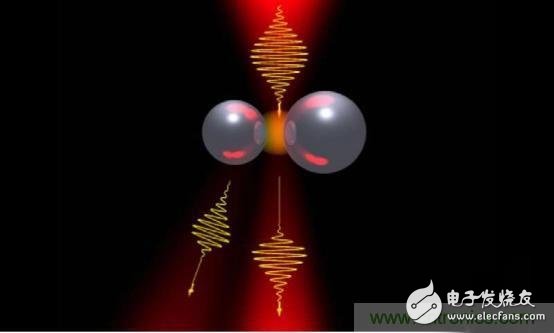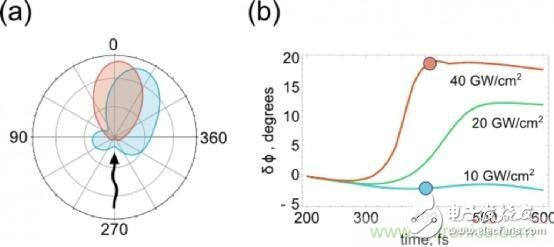As a carrier of electromagnetic radiation, photons have neither mass nor charge. This means that light is relatively difficult to control and, unlike, for example, electrons, can be controlled by applying a constant electric field. However, some devices such as nano-antennas can achieve electromagnetic wave propagation control to some extent. An area that requires "advanced" light processing is the development of optical computers. In these devices, information is not carried by electronics, but by photons. Using light instead of charged particles has the potential to greatly increase the speed at which information is transmitted and processed. Implementing this type of computer requires, for example, a particular nano-antenna device that has the characteristics of applying a constant electric or magnetic field to some extent or by varying the intensity of the incident light.

In an article published in the Journal of Laser and Photonics, the researchers designed a new type of nonlinear nano-antenna that changes the direction of light scattering based on the intensity of the incident wave (Figure 1). The core of the nano-antenna proposed in this study is silicon nanoparticles, which generate electron plasma under strict laser irradiation. The authors have previously demonstrated the possibility of using these nanoparticles for nonlinear and ultrafast control of light. The researchers then managed to manipulate some of the light for forward and backward radiation scattering. Now, by changing the intensity of the incident light, they have found a way to constrain a scattered light in the desired direction.

The radiation pattern of the rotating nano-antenna uses a silicon plasma excitation mechanism. The nano-antenna in this study is a dimeric two-silicon sphere of unequal diameter. Irradiation with a weak laser that will scatter light due to its asymmetrical shape (as in the blueprint of Figure 2A). The choice of two nanoparticle diameters allows one particle to resonate at the wavelength of the laser. Under the illumination of a strong laser pulse, an electron plasma is generated in the resonant particles, which causes a change in the optical properties of the particles. While other particles are non-resonant, a powerful laser field has little effect on them. In general, by accurately selecting the relative sizes of the two particles and the parameters (duration and intensity) of the incident beam, it is even possible to make the particles almost the same size, so that the antenna will reflect the beam (red in Figure 2a) .
"Existing optical nano-antennas can control light over a fairly wide range. However, this capability is usually due to their structure and the materials that make them up, so it is impossible to do it at any time. These features are configured," said Denis Baranov, a graduate student at the Moscow Institute of Physics and Technology and the first author of the paper. “However, the nature of the nano-antenna we studied can be dynamically modified. When we illuminate it with a weak laser pulse, we get a result, but when we use a strong pulse, the result will be completely different. The numerical simulation of the scattering mechanism of light by scientists is shown in Figure 2(b). The simulation results show that when the nano-antenna is irradiated by a weak laser beam, the light is scattered to the antenna side. However, when the nano-antenna is irradiated with a strong laser pulse, the scattering pattern of the electron plasma in the device is rotated by 20 degrees (red line). This provides a way to achieve a weak or strong deflection of the incident pulse in different directions.
Sergey Makarov, a senior researcher in the Department of Nanophotonics and Materials at the National University of Information Technology, University of Information Technology, Petersburg, said: "In this study, we focused on nano-optical chips measuring less than 200 & TImes; 200 & TImes; 500 nm. This is much smaller than the wavelength of a photon carrying information. The new device will allow us to change the direction of light propagation at a better speed than similar devices based on electronics. Our equipment will be able to achieve a very short time. Assigning a signal to two optical channels is very important for today's communication systems."
Today, the speed of information transmission through optical fibers has reached several hundred Gbit / s, and the processing of signals using electronic devices with a speed of only a few Gbit / s in modern single components is very slow. The nonlinear optical nano-antenna proposed here solves this problem because it operates at 250 Gbit/s, which provides a means for fast processing of optical information. Non-linear antennas developed by researchers provide more opportunities to control light at the nanometer scale, which will also be necessary for the successful development of photonic computers and other similar devices.
Liquid Crystal Display,Lcd Screen Displays,Calculator Lcd Display,Lcd Display For Car Bluetooth
Dongguan Yijia Optoelectronics Co., Ltd. , https://www.everbestlcdlcms.com